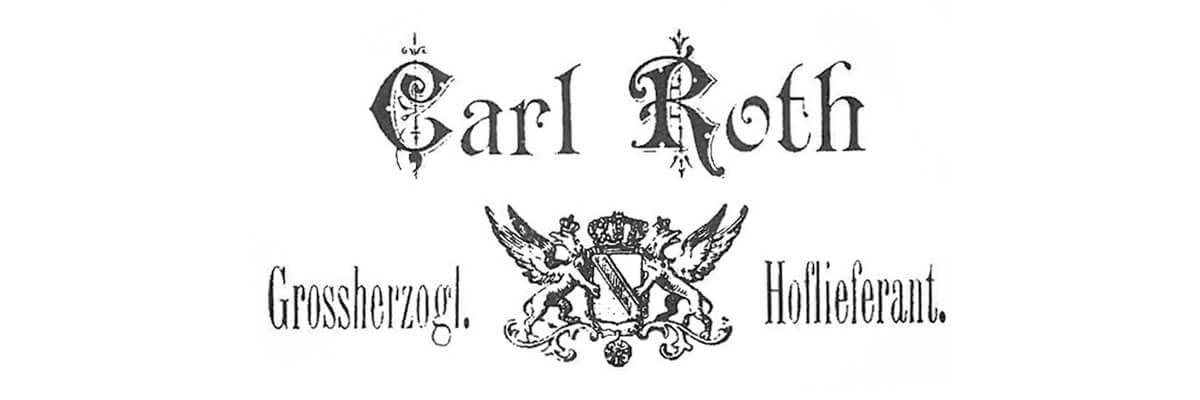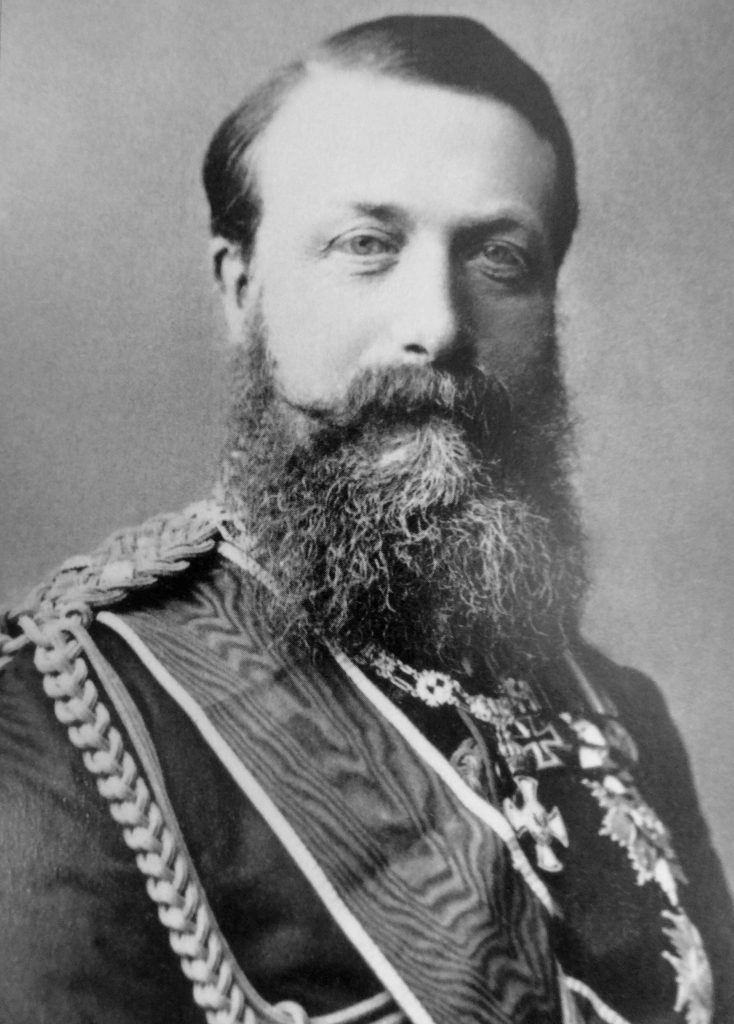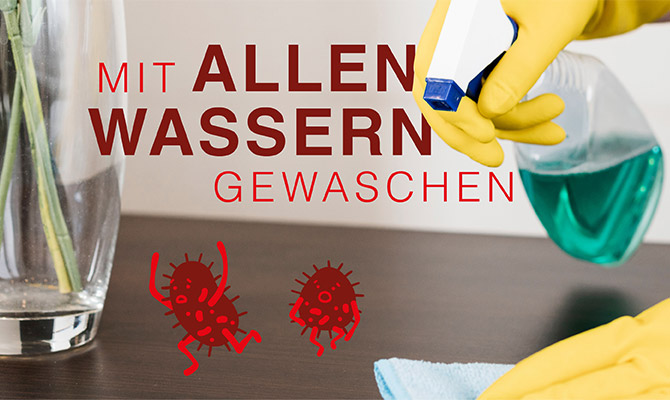
From chemist’s shop to “Hofdrogerie”
It all happened in 1891: Grand Duke Friedrich I of Baden conferred the title of “Purveyor to the Grand Duke” on Carl Roth and his business. At the end of the 19th century, Europe’s monarchies still followed the tradition of appointing particularly valued suppliers as a sign of respect and in recognition of the quality of their goods. This honour allowed the business to use the “Middle Coat of Arms” on printed materials and above the shop door. The title awarded by the Grand Duke was “Hofdrogerie Carl Roth”.
Carl Roth was now among the illustrious ranks of purveyors to the court such as bookseller and printer G. Braun, carrier Eugen von Steffelin and tea dealer Eduard Meßmer – all still well-known, successful companies in Karlsruhe and Baden today.
The end of the 19th century was an exciting and interesting time. The significance of the monarchy was waning, while industrialisation was progressing so vigorously that it had to be regulated by the government. For example, working on Sundays was prohibited in industrial businesses in the German Empire in 1891. Yet people in retail continued to work regularly on Sundays up until the First World War! Whether that was the case at Carl Roth is unknown, however.






